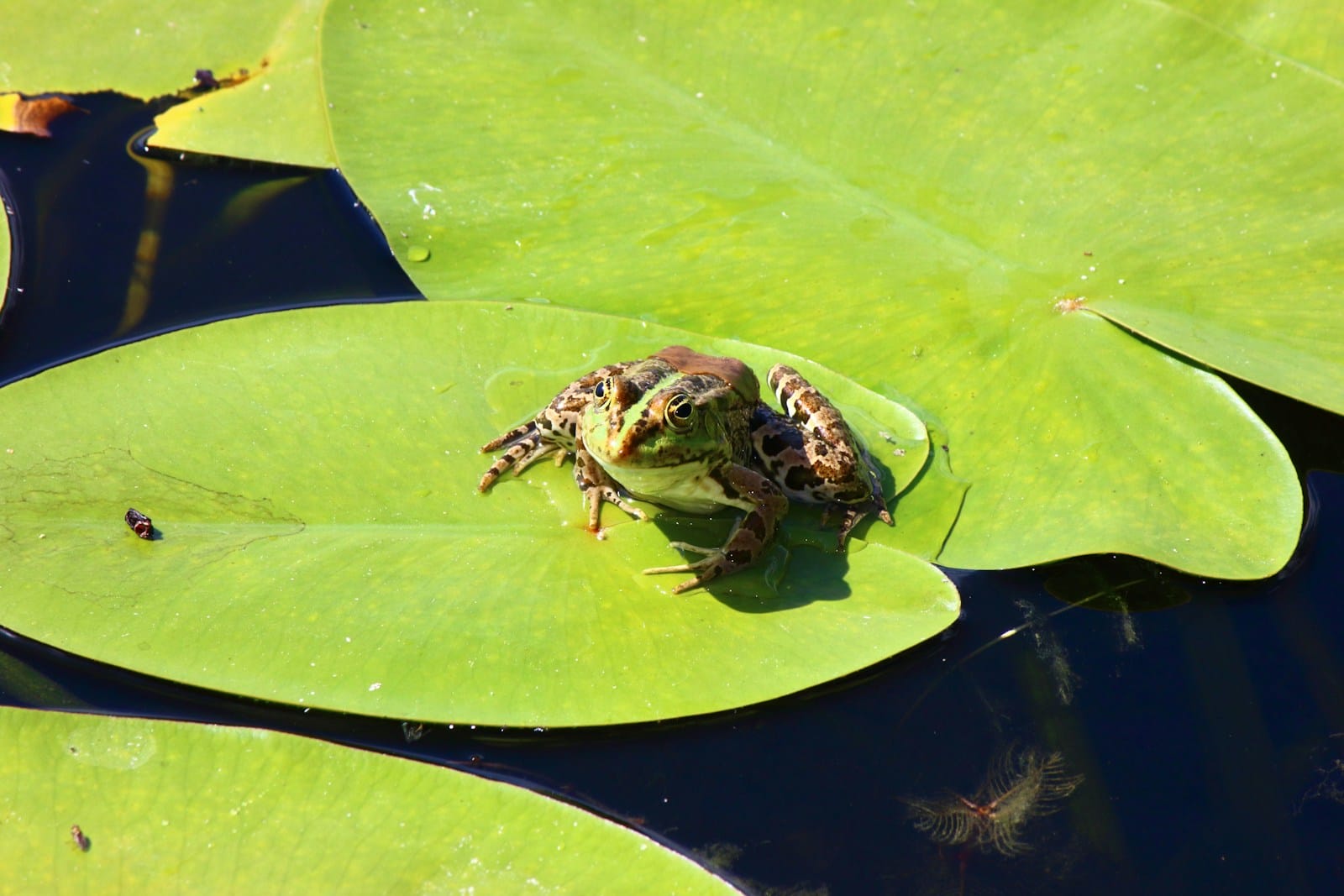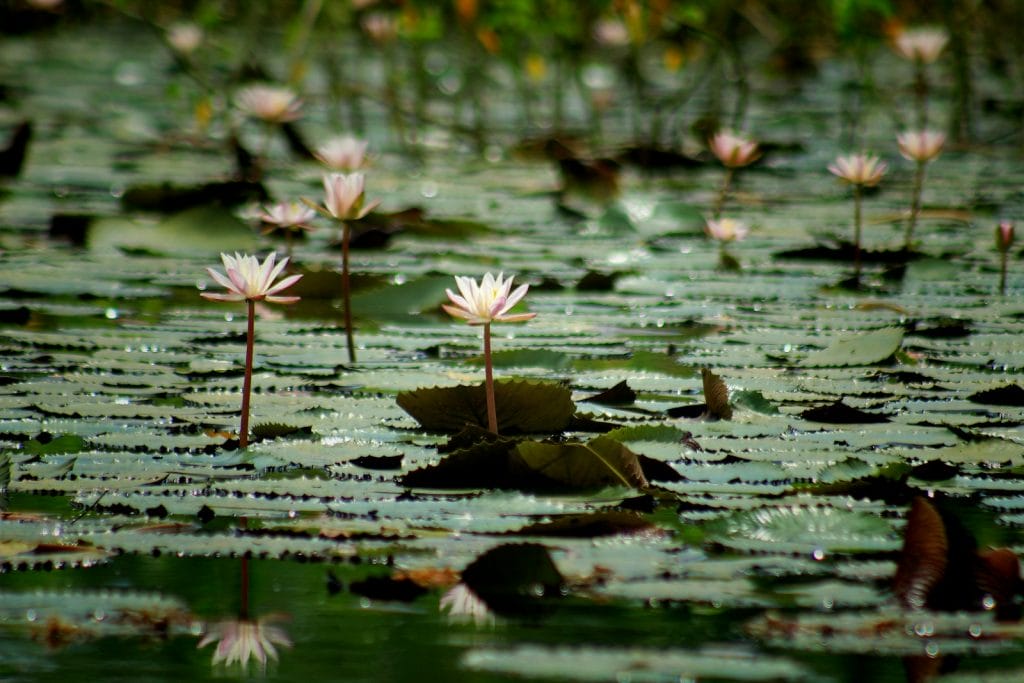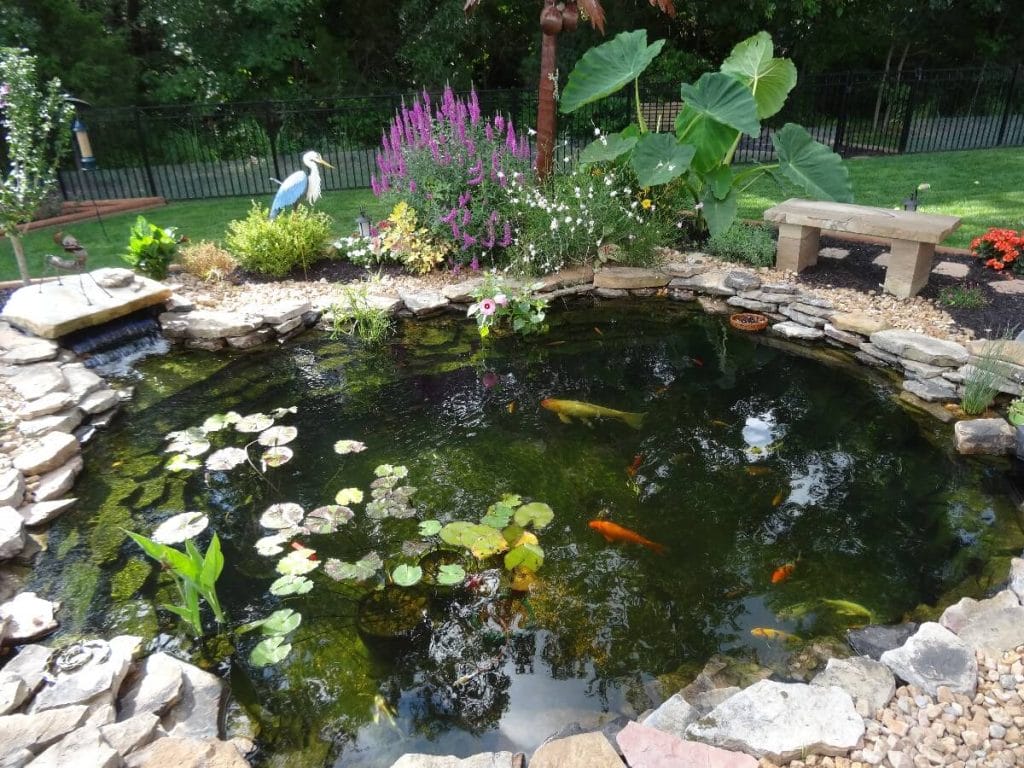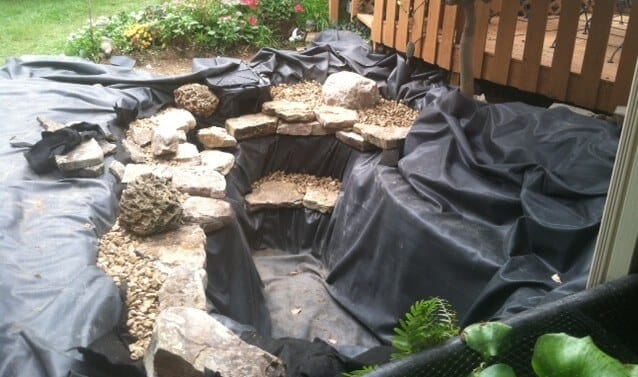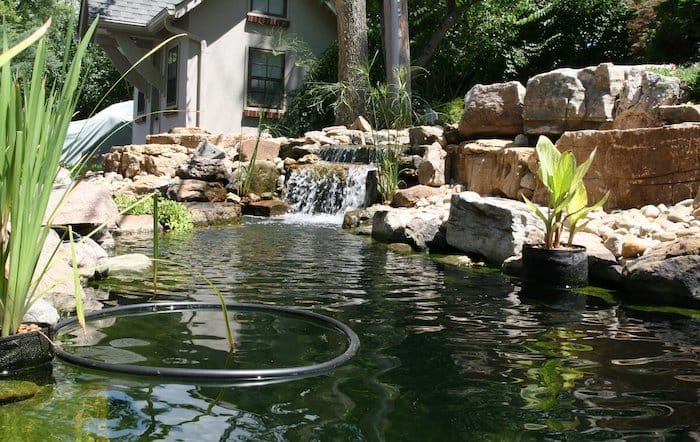
Pond Design Tips & FAQ's
Explore practical tips on pond size, depth, plants, and design features to help you build a thriving backyard ecosystem—then dive into the guides below for all the details.
Adding A Pond To Your Garden
Here you’ll find informative ideas on pond building and design and ways to keep your garden pond healthy.
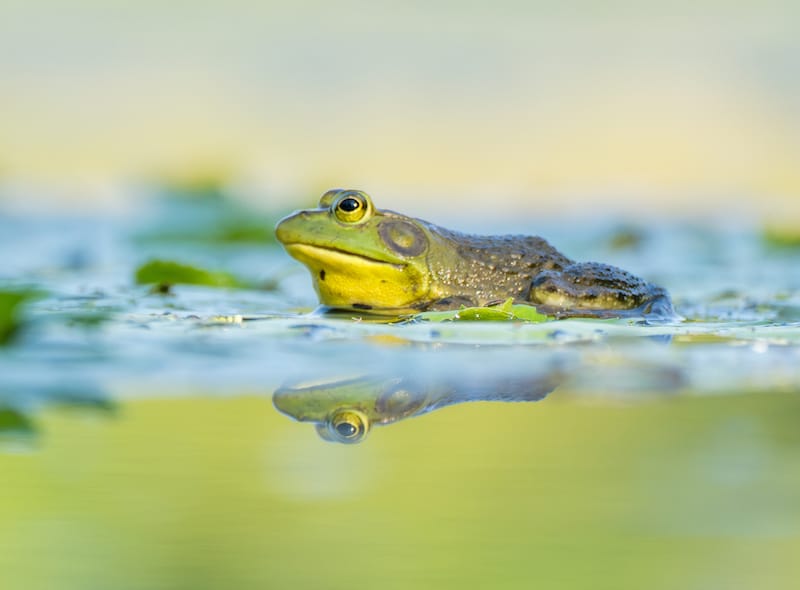
A Pond Turns the Garden Into Its Own Little Ecosystem
Water attracts life. A well-placed pond becomes a natural gathering spot for pollinators, frogs, birds, and other allies. The stillness reflects the sky; the sound of trickling water settles the mind. Beyond beauty, ponds serve a real function: supporting biodiversity, improving humidity around plants, and offering pest control by inviting natural predators like dragonflies and amphibians.
Finding the Right Spot, look for a location with morning sunlight and some afternoon shade and distance from large trees to avoid root interference and leaf drop and visibility from living areas, so the pond becomes part of everyday enjoyment.
When you’re setting up a pond, the size and depth matter for the health of the whole system. Same goes for the garden. You wouldn’t dump chemicals into a fish pond, right? The smarter way is to lean on nature itself and let your flowers and herbs handle the pests, and welcome in the bees, butterflies, birds, and worms. They’ll do the heavy lifting if you give them the chance.
Pond FAQ Common questions, quick answers
A quick grab-bag of the things most people ask before they start digging — depth, fish, filters, plants, and what actually keeps a pond healthy.
How deep should my pond be?
For most backyard ponds, aim for at least 20 inches deep to help stabilize water temperature and keep fish safe from predators. If you’re planning on koi, go closer to 3 feet — that extra depth gives them room to grow and helps them ride out cold winters.
Do I need a pump and filter?
If you want clear, healthy water, yes. A pump keeps water moving and oxygenated, and a filter helps break down waste. Together they cut down on algae, keep things from getting smelly, and give fish a much better life.
What kind of plants should I put in my pond?
A mix works best. Floating plants like lilies add shade, marginals like iris or pickerel weed soften the edges, and submerged oxygenators help keep the water clear. Aim for variety instead of planting one thing heavily.
Will my pond attract wildlife?
Yes — and that’s usually a plus. Frogs, dragonflies, birds, and pollinators will all find the water. They help balance the ecosystem and bring a lot of life to the garden. Just be ready to share the space.
How do I keep algae under control?
Shade and balance help more than chemicals. Add floating plants, avoid overfeeding fish, keep your pump running, and clean out fallen leaves. A UV clarifier can help if the water goes full pea-soup green.
Can I keep koi in a small pond?
Koi need space and depth — ideally 3 feet deep and around 1,000 gallons or more. In smaller ponds, stick with goldfish, comets, or shubunkins. They stay smaller, handle swings in temperature better, and still look great.
How many fish can my pond support?
A simple rule is about 1 inch of fish per 10 gallons of water. Overcrowding means cloudy water, stressed fish, and more algae. It’s better to start light and add slowly than to overstock from day one.
How do I keep my pond healthy in winter?
In cold climates, depth matters. Make sure at least part of the pond is deep enough for fish to overwinter. Stop feeding once water temps drop below about 50°F. Use a small heater or aerator to keep a hole in the ice so gases can escape.
Do ponds require a lot of maintenance?
Once a pond is settled and balanced, it’s more light upkeep than constant work. You’ll scoop leaves, clean the filter, check the pump, and trim plants — but you shouldn’t be out there battling problems every day.
Can I build a pond without digging?
Yes. Stock tanks, whiskey-barrel liners, and framed or partially raised ponds all work well if digging isn’t ideal or your soil is rocky. They also sit higher, which can make viewing and maintenance easier.
What’s the best liner material?
EPDM rubber liners are the standard for backyard ponds — flexible, long-lasting, and good in freeze–thaw climates. PVC liners are cheaper but don’t hold up as long. Preformed shells are fine too, but you’re locked into their shape and depth.
How often should I feed pond fish?
In warm weather, once or twice a day is plenty — only what they’ll finish in a couple of minutes. As water cools, slow way down. When temps drop below about 50°F, stop feeding altogether so food doesn’t rot in their system.
What’s the best time of year to build a pond?
Spring and early fall are usually the easiest — cooler weather makes digging nicer, and plants settle in quickly. That said, any time the ground isn’t frozen and you’re ready to commit is a fine time to start.
Transform your garden into a vibrant, living ecosystem
